
The James Webb Space Telescope is a highly sensitive instrument that is positioned using a precise optical metering support structure. This supporting structure is made from composites to reduce thermal expansion effects while reducing weight. The instrument and structure are subjected to temperatures ranging from ambient during launch to cryogenic temperatures while in orbit. Dynamic and static loads are encountered during launch and in operation respectively.
Challenge
The support structure must meet stringent structural requirements related to distortion, dynamic and static loading events. Testing must be supplemented by analysis to verify and improve the limited number of physical tests. Methodologies must be developed to explore the design via a probabilistic approach and satisfy performance within a 2-sigma range of uncertainty.
Solution
A high fidelity MSC Nastran model (1.5 M nodes, ~5M DOF) was used to examine the structural integrity of the ISIM structure at the global level due to thermal and gravity loads (SOL 101) and a reduced Craig-Brampton model for dynamic analysis (SOL 103). Global only and global-local (Detailed stress models) approaches were used along with testing as a basis to develop and validate methodologies and allowables for the design of composite joints.
The high fidelity MSC Nastran dynamic model was validated via subassembly testing and the results were used to determine optimal placement of instrumentation, excitation load point and target modes. The high fidelity MSC Nastran model was also used to predict the thermal distortion that occurs moving from ambient to cryogenic temperatures, cryogenic thermal stability and physical distortion from 1 G loading. The model was also used to quantify error bounds and uncertainties due to material, manufacturing and spatial variability compared to a nominal analysis. The same model was used to determine and validate strength allowables via a semi-empirical approach. These allowables included composite interlamina failure, composites in-plane failure and metallic ultimate and yield failure at both ambient and cryogenic temperatures. In addition, the global-local approach was used to validate adhesive maximum principal stress failure allowables at cryogenic temperatures.
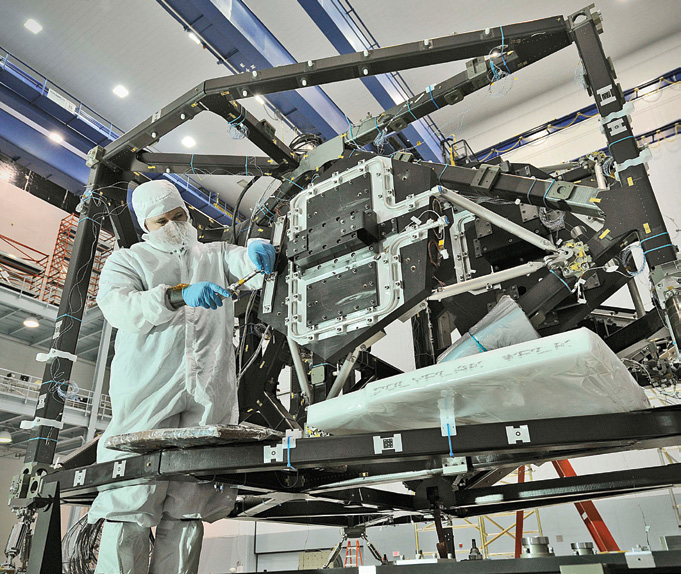
Direct application of the MSC Nastran solver resulted in a validated design that agreed with dynamic test results with frequencies matching within 5%.
Direct application of the MSC Nastran solver resulted in a validated design that agreed with dynamic test results with frequencies matching within 5%. Thermal distortion predictions were validated with cryogenic testing and the error bound associated with nominal predictions was established.
Allowables validated by MSC Nastran models were shown to be conservative at predicting composite joint failure at ambient and cryogenic temperatures.
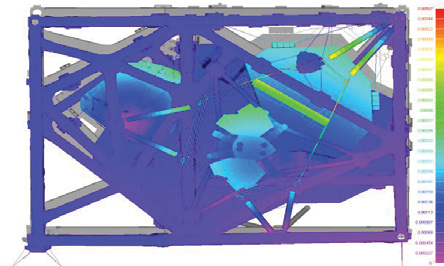
[caption id="attachment_4860" align="alignnone" width="486"]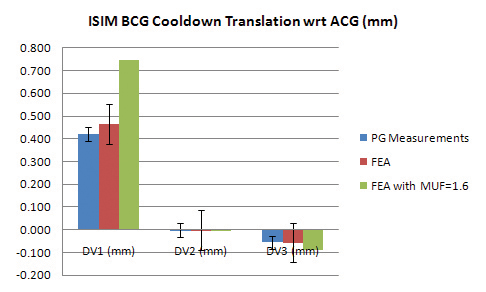 Thermal Distortion Test Results vs Analysis
Thermal Distortion Test Results vs Analysis
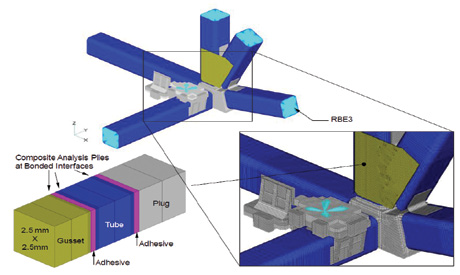
[caption id="attachment_4862" align="alignnone" width="441"]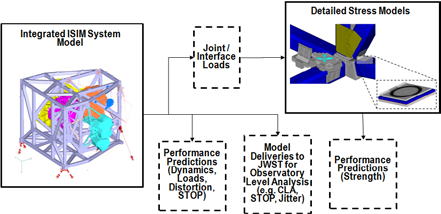 Structural Model Architecture
Structural Model Architecture
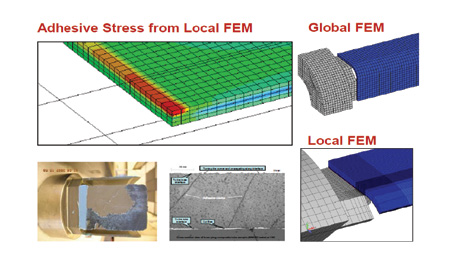
Global Local FEM Model





Leave A Reply